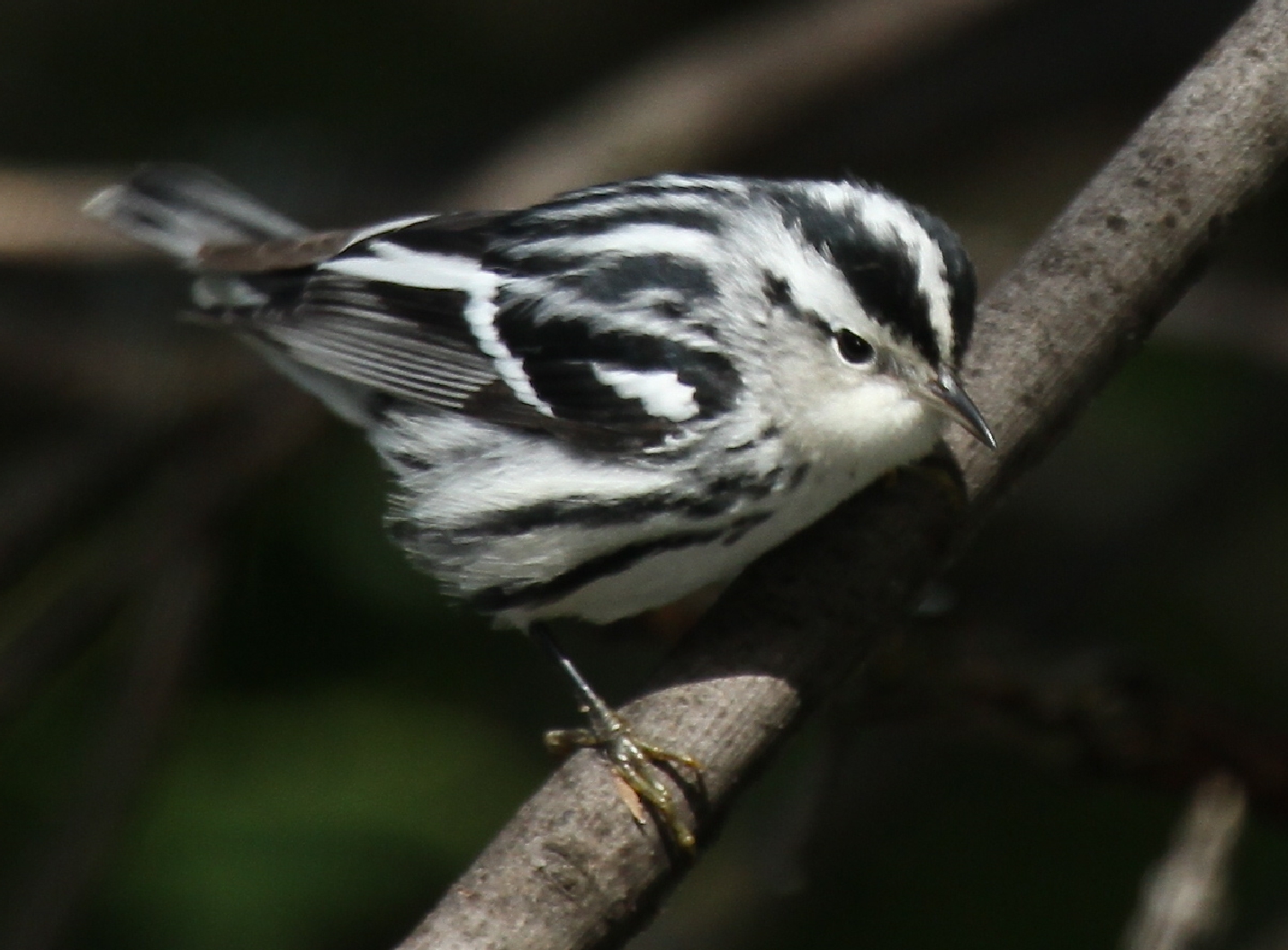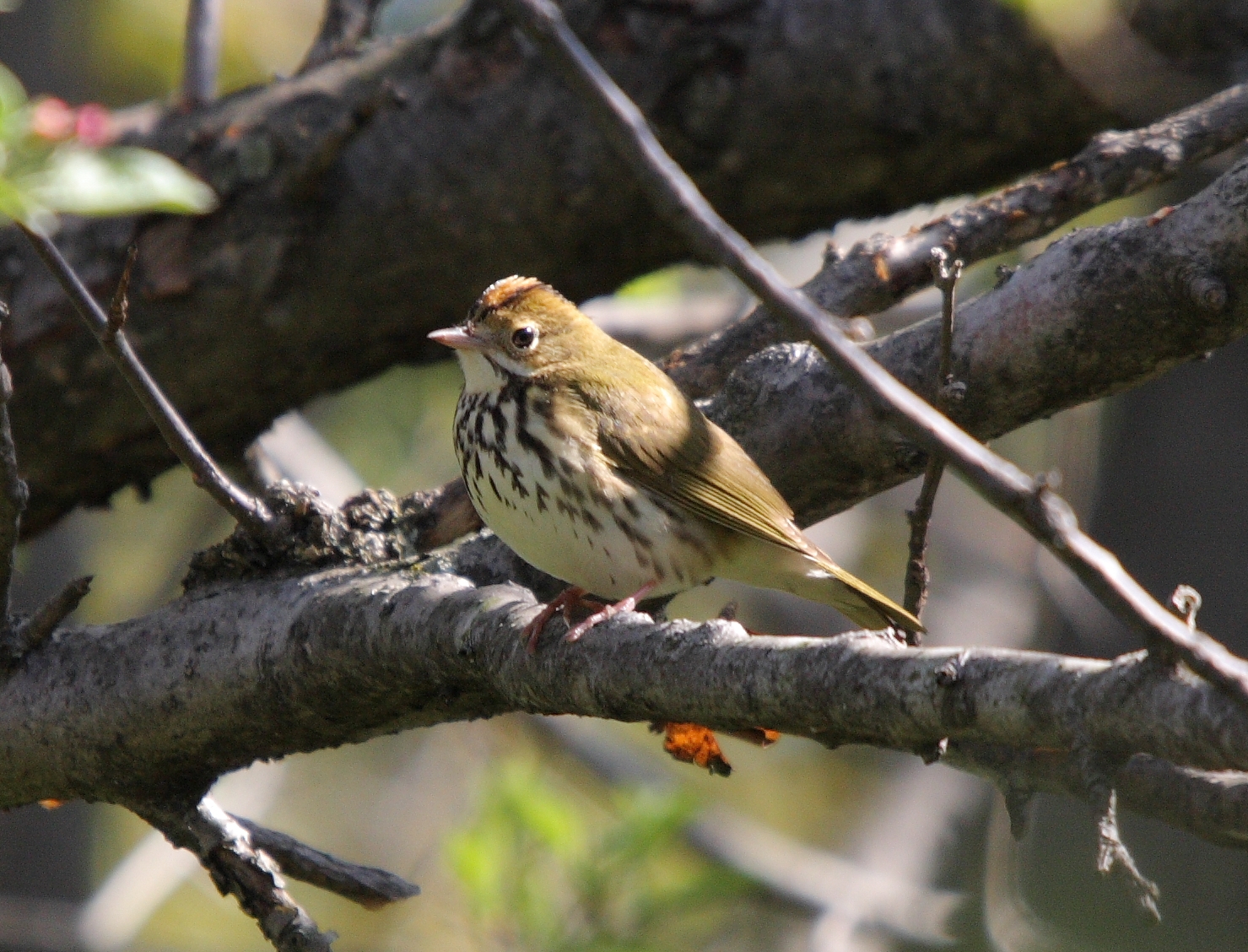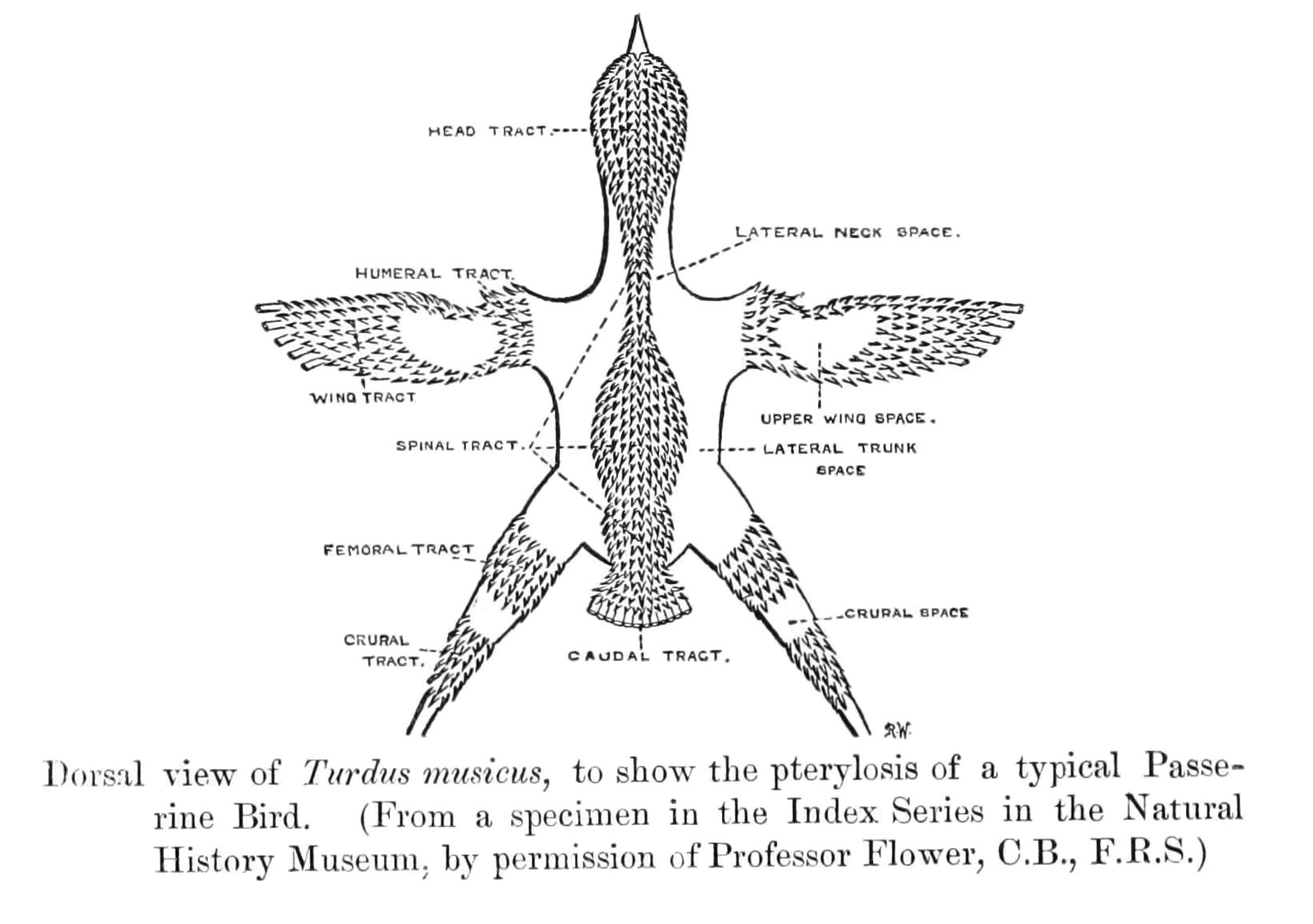|
Parulidae
The New World warblers or wood-warblers are a group of small, often colorful, passerine birds that make up the family Parulidae and are restricted to the New World. The family contains 120 species. They are not closely related to Old World warblers or Australian warblers. Most are arboreal, but some, like the ovenbird and the two waterthrushes, are primarily terrestrial. Most members of this family are insectivores. This group likely originated in northern Central America, where the greatest number of species and diversity between them is found. From there, they spread north during the interglacial periods, mainly as bird migration, migrants, returning to the ancestral region in winter. Two genera, ''Myioborus'' and ''Basileuterus'', seem to have colonized South America early, perhaps before the two continents were linked, and together constitute most warbler species of that region. The scientific name for the family, Parulidae, originates from the fact that Carl Linnaeus, Linn ... [...More Info...] [...Related Items...] OR: [Wikipedia] [Google] [Baidu] |
Mniotilta
The black-and-white warbler (''Mniotilta varia'') is a species of New World warbler, and the only member of its genus, ''Mniotilta''. It breeds in northern and eastern North America and winters in Florida, Central America, and the West Indies down to Peru. This species is a very rare vagrant to western Europe. Relative to other New World warblers, it is not well studied. Description The black-and-white warbler is to in length with a mass of to grams. Wingspan ranges from 7.1 to 8.7 in (18–22 cm). True to their name, black-and-white warblers are black and white in colour. Both sexes have black and white crowns with a white eyebrow, black streaking on a white belly, black wings with two white wing bars, a black tail, a black-and-white streaked back, streaky undertail coverts, and grey-black legs and feet. Breeding males have a black-and-white streaked throat and black cheek, while females have a grey cheek and a white-cream coloured throat and sides. First fall mal ... [...More Info...] [...Related Items...] OR: [Wikipedia] [Google] [Baidu] |
Vermivora
''Vermivora'' is a genus of New World warblers. Species Three species are accepted in the genus,IOC World Bird LisFamily Parulidae one of these species may be extinct: Several additional species were formerly included in ''Vermivora'', but have now been transferred to the genus '' Leiothlypis'':Lovette, I. J. et al. (2010). A comprehensive multilocus phylogeny for the wood-warblers and a revised classification of the Parulidae (Aves). ''Molecular Phylogenetics and Evolution'' 57 (2): 753-770Abstract/ref> * Tennessee warbler ''Leiothlypis peregrina'' * Orange-crowned warbler ''Leiothlypis celata'' * Nashville warbler ''Leiothlypis ruficapilla'' * Virginia's warbler ''Leiothlypis virginiae'' * Colima warbler ''Leiothlypis crissalis'' * Lucy's warbler ''Leiothlypis luciae'' Notes References Bird genera Parulidae * Taxa named by William Swainson {{Parulidae-stub ... [...More Info...] [...Related Items...] OR: [Wikipedia] [Google] [Baidu] |
Ovenbird
The ovenbird (''Seiurus aurocapilla'') is a small songbird of the New World warbler family (biology), family (Parulidae). This bird migration, migratory bird breeds in eastern North America and winters in Central America, many List of Caribbean islands, Caribbean islands, Florida and northern Venezuela. Taxonomy The genus ''Seiurus'' is currently treated as monotypic, containing only the ovenbird; it is genetics, genetically distinct from all other species in the family Parulidae, probably the first genus to evolve separately from the rest of the family. Before the recent genetic studies were carried out, the waterthrushes were also included in ''Seiurus''; these are now treated separately in the genus ''Parkesia'' as they are not very closely related to the ovenbird. The species name ''aurocapilla'' is a noun phrase, so the original spelling is retained, not changed according to the gender of the genus name; Linnaeus originally named it ''Motacilla aurocapilla'', and the endin ... [...More Info...] [...Related Items...] OR: [Wikipedia] [Google] [Baidu] |
Parula
''Parula'' was formerly a small genus of New World warblers which breed in North America, North and South America. In 10th edition of Systema Naturae, 1758, Carl Linnaeus, Linnaeus classified the northern parula as a titmouse, tit, ''Parus americanus'', and as taxonomy developed the genus name was modified first to ''Parulus'' and then the current form. The family name, Parulidae, also derives from this source. Most recently, the two species were: * Northern parula, ''Parula americana'' * Tropical parula, ''Parula pitiayumi'' (Flame-throated warbler, Flame-throated and crescent-chested warbler, crescent-chested warblers were formerly classified in this genus.) Taxonomy Recent genetic research has suggested that ''Parula'' and ''Setophaga'' are congeneric and should be merged. As the name ''Setophaga'' (published in 1827) takes priority over ''Parula'' (published in 1838), both the species would be transferred to ''Setophaga'' where this is accepted. This change has been accepte ... [...More Info...] [...Related Items...] OR: [Wikipedia] [Google] [Baidu] |
Oreothlypis
''Oreothlypis'' is a genus of New World warbler. Most members of this genus for formerly classified in the genus ''Vermivora''. However, the species then in ''Vermivora'' were more closely related to the flame-throated warbler and crescent-chested warbler, then classed in ''Parula'', than to other species of ''Vermivora''. Initially, the new genus '' Leiothlypis'' was proposed for these species by Sangster in 2008, but the American Ornithologists' Union The American Ornithological Society (AOS) is an ornithological organization based in the United States. The society was formed in October 2016 by the merger of the American Ornithologists' Union (AOU) and the Cooper Ornithological Society. Its ... opted to classify them along with the flame-throated and crescent-chested warblers in the existing genus ''Oreothlypis'', though accepted the change in 2019. Species References Bird genera Parulidae Meso-American montane bird species Taxa named by Robert Ridgw ... [...More Info...] [...Related Items...] OR: [Wikipedia] [Google] [Baidu] |
Leiothlypis
''Leiothlypis'' is a genus of New World warbler, formerly classified within the genus ''Oreothlypis'' or ''Vermivora''. The genus was introduced by the Dutch ornithologist George Sangster in 2008 with the Tennessee warbler (''Leiothlypis peregrina'') as the type species. The genus name is derived from the Ancient Greek λειος/''leios'' meaning "plain" and θλυπις/''thlupis'', an unknown small bird mentioned by Aristotle Aristotle (; 384–322 BC) was an Ancient Greek philosophy, Ancient Greek philosopher and polymath. His writings cover a broad range of subjects spanning the natural sciences, philosophy, linguistics, economics, politics, psychology, a .... Although in 2009 the genus was rejected by the American Ornithological Society's Committee on Classification and Nomenclature of North and Middle American Birds, it was accepted in their 2019 supplement to the ''Check-list of North American Birds''. Species Six species are recognised: R ... [...More Info...] [...Related Items...] OR: [Wikipedia] [Google] [Baidu] |
Seiurus
The ovenbird (''Seiurus aurocapilla'') is a small songbird of the New World warbler family (Parulidae). This migratory bird breeds in eastern North America and winters in Central America, many Caribbean islands, Florida and northern Venezuela. Taxonomy The genus ''Seiurus'' is currently treated as monotypic, containing only the ovenbird; it is genetically distinct from all other species in the family Parulidae, probably the first genus to evolve separately from the rest of the family. Before the recent genetic studies were carried out, the waterthrushes were also included in ''Seiurus''; these are now treated separately in the genus ''Parkesia'' as they are not very closely related to the ovenbird. The species name ''aurocapilla'' is a noun phrase, so the original spelling is retained, not changed according to the gender of the genus name; Linnaeus originally named it ''Motacilla aurocapilla'', and the ending is not changed to -''us'' as commonly cited in the past. Etymolo ... [...More Info...] [...Related Items...] OR: [Wikipedia] [Google] [Baidu] |
Waterthrush
The waterthrushes are a genus of New World warbler, ''Parkesia''. The genus was split from ''Seiurus'', which previously contained both waterthrush species and the ovenbird. When the genera split, the ovenbird was the only member left in ''Seiurus'' (making it a monotypic genus). Taxonomy The genus ''Parkesia'' was introduced in 2008 by George Sangster with the northern waterthrush as the type species. The generic name was chosen to honor the American ornithologist Kenneth Carroll Parkes, who was for many years Curator of Birds at Carnegie Museum of Natural History The Carnegie Museum of Natural History (abbreviated as CMNH) is a natural history museum in the Oakland (Pittsburgh), Oakland neighborhood of Pittsburgh, Pennsylvania. It was founded by List of people from the Pittsburgh metropolitan area, Pit ..... Species The genus contains two species. References Parulidae {{Parulidae-stub ... [...More Info...] [...Related Items...] OR: [Wikipedia] [Google] [Baidu] |
Prothonotary Warbler
The prothonotary warbler (''Protonotaria citrea'') is a small songbird of the New World warbler family. It is named for its plumage, which resembles the yellow robes once worn by papal clerks (named prothonotaries) in the Roman Catholic Church. The prothonotary warbler is the only member of the genus ''Protonotaria'' and the only eastern warbler that nests in natural or artificial cavities. These warblers often move with quick, jerky, movements and will even crawl upside down on sticks or trees. During the spring they are often seen in wetlands gathering nesting material, or food, for their mate. Taxonomy The prothonotary warbler was described by the French polymath Georges-Louis Leclerc, Comte de Buffon in 1779 in his '' Histoire Naturelle des Oiseaux'' from a specimen collected in Louisiana. Buffon coined the French name ''Le figuier protonotaire''. The bird was also illustrated in a hand-coloured plate engraved by François-Nicolas Martinet in the ''Planches Enluminées D' ... [...More Info...] [...Related Items...] OR: [Wikipedia] [Google] [Baidu] |
Northern Parula
The northern parula (''Setophaga americana'') is a small New World warbler. It is migratory and breeds in eastern North America from southern Canada to Florida. Taxonomy The northern parula was Species description, formally described in 1758 by the Swedish naturalist Carl Linnaeus in the 10th edition of Systema Naturae, tenth edition of his ''Systema Naturae''. He placed it with the tits in the genus ''Parus'' and coined the binomial name ''Parus americanus''. Linnaeus based his account on "The Finch-Creeper" that had been described and illustrated in 1731 by the English naturalist Mark Catesby in his book ''The Natural History of Carolina, Florida and the Bahama Islands''. Linnaeus specified the type locality (biology), type locality as northern America, but in 1931 this was restricted to South Carolina by the American Ornithologists' Union. The northern parula was moved from the genus ''Parus'' to the genus ''Setophaga'' based on a molecular phylogenetic study of the Parulidae t ... [...More Info...] [...Related Items...] OR: [Wikipedia] [Google] [Baidu] |
Basileuterus
''Basileuterus'' is a genus of New World warblers, best represented in Central and South America South America is a continent entirely in the Western Hemisphere and mostly in the Southern Hemisphere, with a considerably smaller portion in the Northern Hemisphere. It can also be described as the southern Subregion#Americas, subregion o .... This is one of only two warbler genera that are well represented in the latter continent. Some species formerly considered in this genus are now placed in the genus '' Myiothlypis''. It is likely that the ancestors of this genus colonised South America from the family's heartland in northern Central America even before the two continents were linked, and subsequent speciation provided most of the resident warbler species of that region. These are mainly robust warblers with a stout bill. The majority of species have olive or grey upperparts and yellow underparts. The head is often strikingly marked with a long broad supercilium, a ... [...More Info...] [...Related Items...] OR: [Wikipedia] [Google] [Baidu] |
Passerine
A passerine () is any bird of the order Passeriformes (; from Latin 'sparrow' and '-shaped') which includes more than half of all bird species. Sometimes known as perching birds, passerines generally have an anisodactyl arrangement of their toes (three pointing forward and one back), which facilitates perching. With more than 140 families and some 6,500 identified species, Passeriformes is the largest order of birds and one of the most diverse clades of terrestrial vertebrates, representing 60% of birds.Ericson, P.G.P. et al. (2003Evolution, biogeography, and patterns of diversification in passerine birds ''J. Avian Biol'', 34:3–15.Selvatti, A.P. et al. (2015"A Paleogene origin for crown passerines and the diversification of the Oscines in the New World" ''Molecular Phylogenetics and Evolution'', 88:1–15. Passerines are divided into three suborders: New Zealand wrens; Suboscines, primarily found in North and South America; and songbirds. Passerines originated in the ... [...More Info...] [...Related Items...] OR: [Wikipedia] [Google] [Baidu] |




